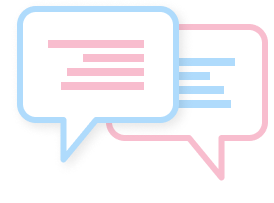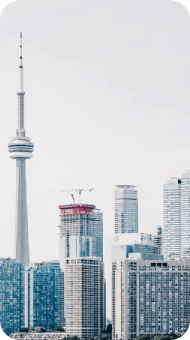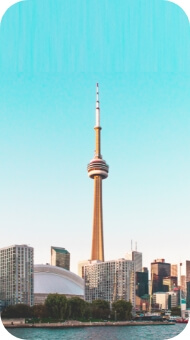The Internet of Things (also known as the Internet of Things or IoT) is a concept that refers to the interconnection of everyday elements with each other and through the Internet. This concept is gradually taking shape in our environment, it is in full evolution and on which new projects arise daily.
One of the areas where IoT is gaining a greater presence is in the cities. If the development of this technology in urban contexts is carried out effectively, it can completely change our lives in the city. Time savings, increased traffic control, accident notification or greater road safety would be some of the benefits we would obtain by having updated information instantly on our mobile devices.
The Internet of Things applications open a whole universe of possibilities for cities. In this post, we present a selection of applications of the Internet of Things used in different urban contexts.
Internet of Things applications in Smart City
Smart City and Internet of Things are two concepts that walk hand in hand. Smart Cities are not understood without the development of IoT (Internet of Things) and, in the same way, the technology that will connect billions of objects needs a test bench and the momentum that Smart City provides.
What is the impact of the Internet of Things on Smart City? What will be the areas of application of this technology in the cities of the future? Here are some key aspects:
- The development and promotion of a new production model, called Industry 4.0 or Connected Industry that will revolutionize traditional production systems.
- The commitment to a new sustainable model of consumption and production requires the development of intelligent and scalable objects that can boost a Circular Economy through innovation.
- The implantation of sensors in the urban environment is essential to boost the efficiency of public services and the reduction of public spending through intelligent management of resources.
- Internet of Things is key to the development of local governance systems and the constant feedback of opinions and valuations of citizens (smart citizens).
- Smart Cities are committed to energy sustainability models and intelligent management of resources that cannot be understood without the presence of the Internet of Things in the Smart City with examples such as smart buildings or new lighting systems.
- An eAdministration that interacts with citizens and that receives and acts upon their demands requires tools and objects to ensure that active listening.
- The management of intelligent mobility through public transport or connected cars and real-time information of everything that happens on the streets and accesses requires the presence of the Internet of Things in the Smart City.
- The economic impulse and the constant commitment to entrepreneurial solutions go through the development of IoT in the urban environment.
What impact has IoT brought to smart cities?
At the industrial development level, the Internet of Things in Smart Cities has driven the development of new production models that collect data on how a city moves to establish efficient methods with which it is possible to do a correct use of the city’s resources. The purpose is to develop models of sustainability of consumption and production to boost the economy.
In smart cities, IoT is implemented through sensors, giving importance to public services such as transport, lighting, irrigation systems, waste collection, etc. therefore, efficient management will be achieved that reduces public spending.
Smart cities must bet on self-sustaining models in terms of energy and resource use, through the IoT. Thanks to this, the quality of life of citizens and the environment in which they live will be improved.
Fire detection and river overflows.
Fires in times of drought and river overflows are problems that affect many cities. But what if we could detect it with enough time to warn the population? Well, in Ucluelet, in the province of British Columbia, they are doing it. 11 sensors have been placed in trees from different points of the nearby forests, which measure parameters such as CO2, humidity or temperature and also detect certain gases in the air to determine if a fire is occurring in the surroundings. 16 sensors have also been placed on bridges, which by ultrasound determine the height of the water and if there is a risk of overflow. All sensors are connected to emergency services in the region.
Smart parking
With the increase in the number of vehicles in the last decade, it has made it increasingly difficult to park in cities. But the Internet of Things technology can help us find parking in the shortest possible time, monitoring the free gaps in the streets and telling drivers. Stratford is a city that already has this system in many of its roads, having placed more than 375 magnetic sensors in the busiest places in the city. The magnetic sensors are connected to informational signs placed at the beginning of the tracks. These posters are updated every 5 minutes, informing of the parking available. They have also carried out the development of a mobile app from where you can check available places to park our vehicle.
State of the structures
In cities of the world such as San Francisco or Tokyo, where the danger of suffering an earthquake is relatively high, sensors are being placed in buildings and strategic locations in cities that can warn citizens that one of them is approaching. These types of sensors also provide information on the state of the structures, so that in case of danger of collapse or damage to the building, it can be detected in advance and avoid even greater catastrophes. This application is being implemented in many bridges and infrastructures, monitoring their status.
Garbage and waste control
A large amount of garbage is generated in the cities and the cleaning services must collect it efficiently. Therefore, sensors have been placed in all the garbage cans in the island city of Bornholm, Denmark. These sensors determine the amount of container filling and send the data to the garbage trucks. Thus, it can be determined when it is necessary to empty the container and optimize its collection. Besides, they incorporate temperature sensors, vibration, and a GPS locator, so that the garbage collection service can know the condition of the container at all times.
Public transport
Ekobus is a project that is being carried out in different cities in Europe and that aims to improve the efficiency of public transport in the cities. The first city to use this technology is Belgrando, in Serbia. Using sensors and GPS locators placed on buses, their position is monitored and citizens can check where they are through an application for Android and web browsers. On the other hand, these sensors include tools that measure aspects such as humidity, temperature or the amount of CO2 found in the air.
How to boost the Internet of Things in Smart City
For all these applications to be an operational reality, IOT needs the commitment from the city’s administration and society. How to boost the Internet of Things in Smart City? These are some keys:
- Internet of Things in Smart City needs the development of 5G technology that drives mobile connectivity and is capable of transmitting and managing the entire volume of data generated by connected objects.
- The development of networks connected between administrations, companies, and citizens through a new communication model that favors full connectivity between all the actors that are part of the Smart City.
- The impulse of entrepreneurial solutions that are committed to the constant development and new applications of the Internet of Things, both for public management and private enterprise.
- Control systems and analysis and interpretation of all the information generated by the connected devices throughout the city and allowing a quick and efficient response.
- Security systems insurmountable in the face of the volume of personal and professional data that will be handled by both citizens, companies, and administrations.
The list of applications and benefits of the Internet of Things in Smart City is endless. However, it depends on a commitment to the promotion of all its possibilities, as well as the development of the technical requirements that will take cities to a new level and they will become fully connected and integrated urban environments in the concept of digital transformation.
Also Read
Top 10 IoT Development Companies Los Angeles
How IoT is Contributing To Environmental Sustainability
Leading IoT Development Company in Chicago
Top 10 IoT Development Companies in New York
Top IoT Development Companies in San Francisco

Recent Articles
The Top 10 Successful App Developers...
Hiring an app developers company is no easy feat. In...
Top 10 Innovative Mobile App Developers...
San Francisco has an incredibly diverse and a magnificent tech...
Top 10 Most Trusted Mobile App...
Houston boasts of a splendid tech landscape that is mushrooming...






